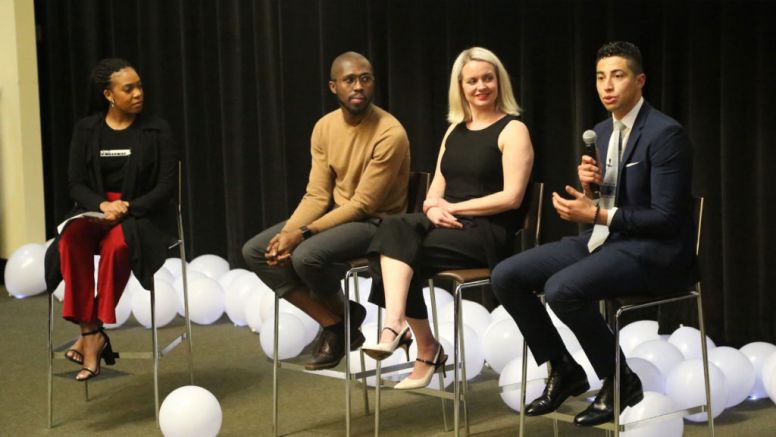News & Stories
Divergence: Redefining the status quo at UNC Kenan-Flagler

Diversity is a hot topic at any university or workplace. College brochures are plastered with statistics about minority representation on campus and company recruiters are eager fire off all the things that make their firms diverse. But what about these facts and statistics really help to build an inclusive community?
The Undergraduate Business Program’s diversity and inclusion board tackled some of these important issues with its forum “Divergence: Redefining the status quo at Kenan-Flagler.” The event featured three speakers each discussing a different aspect of inclusion and community building.
UNC graduate Herrison Chicas, a social entrepreneur and storyteller kicked off the event with a spoken-word performance. He used a story about his morning visit to the gym as a vehicle to deliver a message about bringing people from different backgrounds together to foster respect and acceptance.
One of the most powerful lines of his performance related lifting weights in the gym to working to bring communities together: “I begin pushing and pulling weights hoping that these muscles will one day be strong enough to uplift my community, strong enough to bridge two different worlds together.”
Chicas spoke about struggling to find a community at UNC and the constant pressure of comparing himself to high-performing peers. But he gave students some advice: “Once you come to the conclusion that you are uniquely you, that your DNA has never existed and will never ever exist again, that the right combination of talent, flaws and insecurities make you you – once you realize that, the same daunting Carolina can become the best petri dish to explore the world.”
Allison Schlobohm, clinical assistant professor of management and corporate communication at UNC Kenan-Flagler, explored imposter syndrome or imposter phenomenon as she prefers to call it. At a place like UNC, and more specifically UNC Kenan-Flagler, everyone is so accomplished and it can be easy to feel like an imposter. To cope people put on masks and try to fit in and become more like their community.
“The idea that we all want to be the same is detrimental to our community and it will not make us better, it will only hold us down,” said Schlobohm.
To overcome this imposter phenomenon you have to become vulnerable, so there needs to be an inclusive and safe space for people to feel comfortable sharing their flaws, she said. In the end, overcoming imposter phenomenon can help empower others.
“Our masks aren’t actually that great. When we lift them up, we’re doing everyone a favor by saying I know that I’m flawed so it’s okay that you are, too,” said Schlobohm.
So how do we create these safe spaces for people to feel comfortable taking off their masks? Tim Salau, a product manager at Microsoft and community builder, shared his successful model for developing inclusive communities.
After identifying a need for a place for professionals and students to share stories, ask for advice, and find mentors, Salau created the Facebook group called Mentors and Mentees in 2017. Now over 6,000 members strong, the group has become a place for members to empower each other.
Salau has developed what he calls the CSA model for creating other inclusive communities. CSA stands for create, share and amplify. In the create stage the main purpose is to identify the community you want to create. Once you’ve found the purpose for your community you move on to the share stage. Salau emphasized that every community starts small, and it’s not going to be built overnight. The first members in his Mentors and Mentees group were his mom, dad and high school English teacher.
Share is the hardest stage, says Salau. “At the share stage is when people are most scared, face the most challenges and carry the notion of imposter syndrome, so they are not able to bring their ideas into the world and involve other people.” The best way to overcome that fear is to be selective about who joins initially. Find other people who share the same passion and are “down for the cause.”
Amplify is the final stage of the CSA model. During this stage you have to think about how you want the community to grow and what things you can do to empower members and strengthen bonds. For his Facebook group, Salau asked the most active members to create Facebook live workshops about their passions in the professional sphere. These workshops received thousands of impressions and led more people to find his Facebook group. In this case, Salau “leveraged the core purpose of the community to help people take control of their careers.”
As a final piece of advice, Salau used what both Chicas and Schlobohm built toward: “Break through your imposter syndrome, and ask ‘How can I create share and amplify to build my tribe?”
By Kelly McNeil (BSBA ’19)